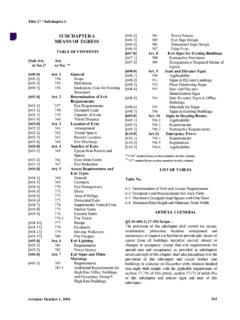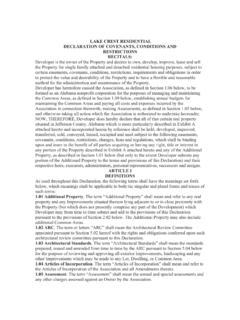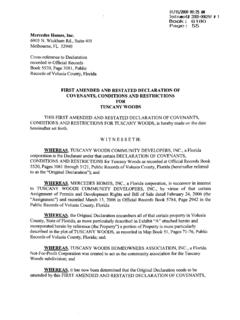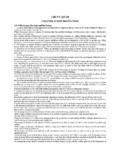Transcription of NATIONAL BUILDING CODE OF INDIA - mahafireservice.gov.in
1 NATIONAL BUILDING CODE OF INDIAPART 4 FIRE AND LIFE SAFETYBUREAU OF INDIAN STANDARDSS upplied by Book Supply Bureau Under the License from BIS for LARSEN AND TOUBRO CONSTRUCTION - MANAPAKKAM, CHENNAI ON 17-03-2017 08:57:36 ( ) valid upto31-12-2017 Supplied by Book Supply Bureau Under the License from BIS for LARSEN AND TOUBRO CONSTRUCTION - MANAPAKKAM, CHENNAI ON 17-03-2017 08:57:36 ( ) valid upto31-12-20172 NATIONAL BUILDING CODE OF INDIA 2016C O N T E N T 31 72 73 FIRE 124 LIFE 275 FIRE 526 ADDITIONAL OCCUPANCY WISE 58 ANNEX A CALORIFIC VALUES OF COMMON 68 ANNEX B BROAD CLASSIFICATION OF INDUSTRIAL 69IN TO DIFFERENT DEGREE OF HAZARDANNEX C AVAILABLE DATA REGARDING FIRE RESISTANCE 72OF VARIOUS BUILDING COMPONENTSANNEX D GUIDELINES FOR FIRE DRILL AND 81 PROCEDURES FOR HIGH RISE BUILDINGSANNEX E ADDITIONAL REQUIREMENTS FOR HIGH RISE 87 ANNEX F 89 ANNEX G COMMERCIAL 91 ANNEX H CAR PARKING 94 ANNEX J FIRE AND LIFE SAFETY REQUIREMENTS FOR METRO STATIONS.
2 96 ANNEX K FIRE AND LIFE SAFETY REQUIREMENTS FOR M FIRE PROTECTION CONSIDERATIONS FOR VENTING BUILDINGSLIST OF by Book Supply Bureau Under the License from BIS for LARSEN AND TOUBRO CONSTRUCTION - MANAPAKKAM, CHENNAI ON 17-03-2017 08:57:36 ( ) valid upto31-12-2017 Supplied by Book Supply Bureau Under the License from BIS for LARSEN AND TOUBRO CONSTRUCTION - MANAPAKKAM, CHENNAI ON 17-03-2017 08:57:36 ( ) valid upto31-12-2017 PART 4 FIRE AND LIFE SAFETY3 NATIONAL BUILDING Code Sectional Committee, CED 46 FOREWORDThis Code (Part 4) deals with safety from fire. It specifies the demarcation of fire zones, restrictions on constructionof buildings in each fire zone, classification of buildings based on occupancy, types of BUILDING constructionaccording to fire resistance of the structural and non-structural components and other restrictions and requirementsnecessary to minimise danger to life from fire, smoke, fumes or panic before the buildings can be evacuated.
3 TheCode recognizes that safety of life is more than a matter of means of egress and accordingly deals with variousmatters which are considered essential to the safety of life. The Code therefore covers provisions relating tomeans of egress covering various components thereof namely exit access, exit and exit discharge. It also coversprovisions relating to fire protection of buildings through portable and fixed firefighting protection techniques have to be based on the fire behaviour characteristics of different materials and structuralelements of buildings. The activities pursued by the occupants of buildings must also be taken into considerationfor assessing the extent of hazards, and method should then be devised by which the hazards could be indefinite combination of variables is involved in the phenomenon of fire, all of which cannot be requirements of this Code should, therefore, be taken as a guide and an engineering design approach shouldbe adopted for ensuring a fire safe design for buildings.
4 Depending upon the type and complexities in a BUILDING ,qualified and trained fire protection engineers should be associated with the planning of buildings, so that adequatefire and life safety measures could be incorporated in the BUILDING design right from the safety from fire is not attainable in practice. The objective of this Part is to specify measures that willprovide that degree of safety from fire which can be reasonably achieved. The Code endeavours to avoidrequirements that might involve unreasonable hardships or unnecessary inconvenience or interference with normaluse and occupancy of buildings, but insists upon compliance with minimum standards of fire safety necessary forbuilding occupants and users. For ensuring compliance of fire protection equipment/installations to the laid downquality requirements, it is desirable to use such equipment/installation duly certified under the BIS CertificationMarks providing guidelines for minimizing chances of occurrence of fire through passive fire protection measures,this Part does not intend to cover all aspects of general fire prevention including sources of ignition.
5 Nor does itcover the prevention of accidental personal injuries during the course of normal occupancy of Part while recognizing that panic in a BUILDING on fire may be uncontrollable, deals with the potential panichazard through measures designed to prevent the development of panic. Experience indicates that panic seldomdevelops even in the presence of potential danger, so long as occupants of buildings are moving towards exitswhich they can see within a reasonable distance and with no obstruction or undue congestion in the path of , any uncertainty as to the location or adequacy of means of egress, the presence of smoke or fumes andthe stoppage of travel towards the exit, such as may occur when one person stumbles and falls on stairs, may beconducive to panic. Danger from panic is greater when a large number of people are trapped in a confined areaparticularly when people are not adequately guided towards egress and safety notifications are not implementedor practiced.
6 Consideration towards announcements and annunciations needs to be given to guide the occupantsto safe egress routes and to control panic during situation of has shown that concealed spaces within a BUILDING , such as, space between ceiling and false ceiling,horizontal and vertical ducts and shafts, etc, tend to act as flues/tunnels during a fire. Provision should, therefore,be made to provide fire stopping within such in this Part of the Code shall be construed to prohibit better types of BUILDING construction, more exits orotherwise safer conditions than the minimum requirements specified in this with this Part shall not be construed as eliminating or reducing the necessity for other provisions forsafety of persons using a BUILDING or structure under normal occupancy conditions. Nor shall any provision of thisSupplied by Book Supply Bureau Under the License from BIS for LARSEN AND TOUBRO CONSTRUCTION - MANAPAKKAM, CHENNAI ON 17-03-2017 08:57:36 ( ) valid upto31-12-2017 Supplied by Book Supply Bureau Under the License from BIS for LARSEN AND TOUBRO CONSTRUCTION - MANAPAKKAM, CHENNAI ON 17-03-2017 08:57:36 ( ) valid upto31-12-20174 NATIONAL BUILDING CODE OF INDIA 2016 Part be construed as requiring or permitting any addition that maybe hazardous under normal occupancy of the major points brought out in this Part is the limitation of heights and areas of buildings based on firesafety of the occupants.
7 Individual municipal corporations are free to alter Table 2 based on local conditions, butthe ratios of areas as maintained in the table for different occupancies and types of construction shall be has been taken of the developments, particularly in fire resistance rating of materials, designatingtypes of construction in a rational manner and relating the area limitations of different occupancies to differenttypes of (halogenated hydrocarbons) which exhibit exceptional firefighting and explosion prevention/suppressioncharacteristics have been found to possess high ozone depleting potential. They come under Group II of Annex Aof the Montreal Protocol on Substances that Deplete the Ozone Layer, the international environmental agreementfor phasing out ozone depleting substances. Due to increasing evidence that the ozone layer is getting depleted ata faster rate than thought earlier, the Code takes into cognizance the need to promote use of halon alternatives asfire extinguishing first version of this Part was formulated in 1970 and was revised in 1983.
8 Subsequently the first revision ofthis Part was modified in 1997 through Amendment No. 3 to 1983 version of the Code. This modified version ofthis Part included few tables for the fire resistance ratings of various BUILDING components, such as walls, columns,beams and floors. The requirements for wet riser, down-comer, automatic sprinkler installation, high velocity(10-15 m/s) water spray or foam generating system, etc, for buildings were modified. Annex giving guidelines forselection of fire detectors had been deleted and relevant Indian Standards on fire alarm system and smoke detectorshad been referred. Also, an annex for determination of fire loads and flue load density for arriving at the classificationof occupancy hazard and calorific values of some common materials were included. Annex for broad classificationof industrial and non-industrial occupancies into low, moderate and high hazard had also been Code was then revised in 2005.
9 In this revision, the significant modifications incorporated were: The text wasdivided into the following broad clauses: (a) Fire prevention Covering aspects of fire prevention pertaining todesign and construction of buildings on passive fire protection measures, also describing the various types ofbuilding materials and their fire rating; (b) Life safety Covering life safety provisions in the event of fire andsimilar emergencies, also addressing construction and occupancy features that are necessary to minimise dangerto life from fire, smoke, fumes or panic; (c) Fire protection Covering the significant appurtenances and theirrelated components and guidelines for selecting the correct type of equipment and installation meant for fireprotection of the BUILDING , depending upon the classification and type of the BUILDING . Also, the classification ofbuilding based on occupancy was elaborated, wherein, starred hotels were covered as a new subdivision A-6under occupancy Group A Residential; heritage structures and archaeological monuments were covered underSubdivision D-3 occupancy Group D Assembly buildings; mixed assembly occupancies were covered as a newSubdivision D-6; underground elevated railways were covered as a new subdivision D-7 under occupancy GroupD Assembly buildings; and TV stations were covered under subdivision E-5 of occupancy Group E Businessbuildings.
10 Further, for the external stairs for exit requirements, the width and treads were increased to 1 250 mmand 250 mm, respectively; under the requirements for institutional buildings the clear width of all required exitswhich serve as egress from hospital or infirmary section was increased from m to 2 m. Also, provision ofpatient-lift was included; and due cognizance of halon phase out programme was taken, while specifying provisionsin this Part with respect to fire protection using fire on various comments received from time-to-time, an Amendment No. 2 relating to Part 4 of the 2005version of the Code, was this current revision, the following significant changes have been made:General:1) The scope of application of provisions of this Part of the Code for different occupancies has been ) Definitions of various new terms have been included and definitions of some of the existing terms havebeen updated based on latest developments and Prevention:3) Based on the experience in the use of the provisions of the Code in relation to various occupancies andSupplied by Book Supply Bureau Under the License from BIS for LARSEN AND TOUBRO CONSTRUCTION - MANAPAKKAM, CHENNAI ON 17-03-2017 08:57:36 ( ) valid upto31-12-2017 Supplied by Book Supply Bureau Under the License from BIS for LARSEN AND TOUBRO CONSTRUCTION - MANAPAKKAM, CHENNAI ON 17-03-2017 08:57.






